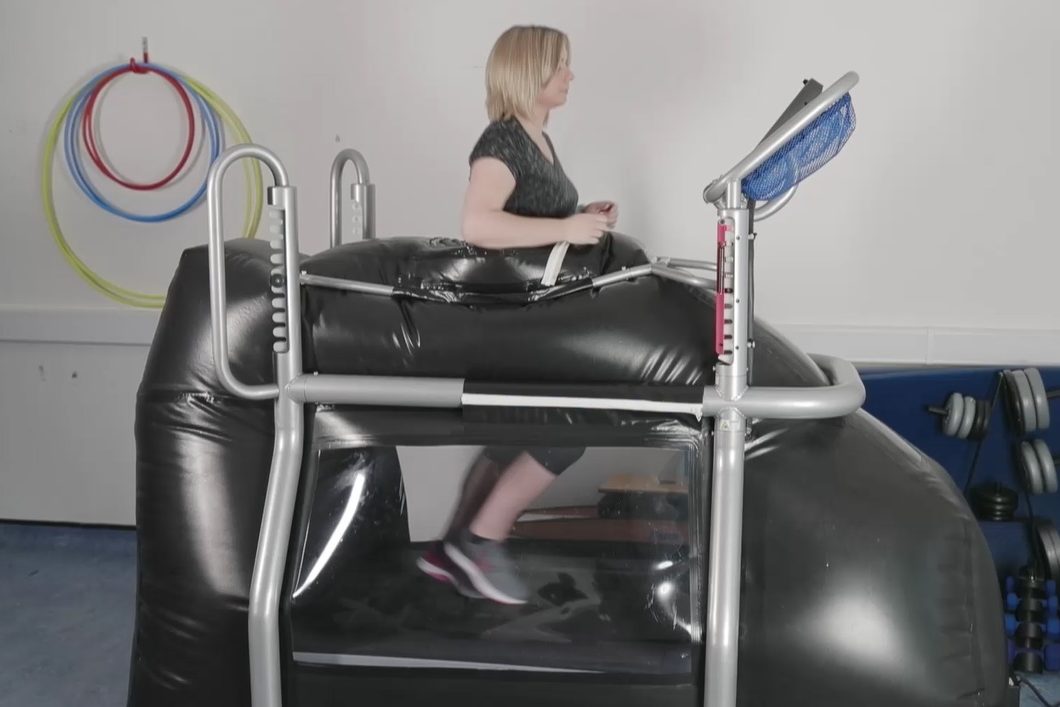Anti-gravity treadmill programmes in postoperative osteochondral rehabilitation.
Summary
Anti-gravity treadmills are being increasingly used after knee surgery to reduce ground reaction forces during walking and running to facilitate postoperative rehabilitation. Muscle activity decreases as body weight decreases on an anti-gravity treadmill, but the percentage change in muscle activity is less than the percentage change in body weight. It is possible to achieve target knee forces during rehabilitation using an anti-gravity treadmill and anti-gravity treadmills have been shown to be safe and feasible to use in early rehabilitation following total knee replacement.
However, there are no studies on the use of anti-gravity treadmills in a knee osteochondral (articular cartilage in conjunction with the subchondral bone) population despite their increasing inclusion in rehabilitation guidelines.
Objectives
The purpose of this project is to assess the impact of anti-gravity return to sports programmes on knee function and self-efficacy following knee osteochondral surgery. It is hypothesised that the use of an anti-gravity treadmill will have a positive influence on knee and rehabilitation self-efficacy and subjective knee function.
During this project we are:
- Identifying suitable participants who have had or are scheduled to have osteochondral knee surgery.
- Developing structured anti-gravity treadmill programmes based on individual, surgical and sports specific factors.
- Assessing the impact of the anti-gravity treadmill programmes on self-efficacy and subjective knee function.
People
Dr Karen Hambly – Principle Investigator, School of Sport and Exercise Sciences, University of Kent.
Sadie Jones – Co-investigator and PhD student, School of Sport and Exercise Sciences, University of Kent.
Somuruthai Poomsalood – Co-investigator and PhD Student, School of Sport and Exercise Sciences, University of Kent.
Deana Stephens – Clinic Supervisor, School of Sport and Exercise Sciences, University of Kent.
About
Osteochondral defects of the knee are a frequent cause of pain and reduced function, especially in active people. Surgical techniques to repair this damage have been shown to improve function and relieve pain but rehabilitation following osteochondral surgery is lengthy due to the repair tissue taking up to 3 years to mature. The new repair tissue is, initially, not as durable as healthy articular cartilage and therefore loading of the new tissue needs to be controlled within the rehabilitation process. The timing of return to sport and exercise varies depending on individual and surgical factors, along with the level of joint impact involved in the activity, but it is generally between 6 and 18 months post-surgery.
